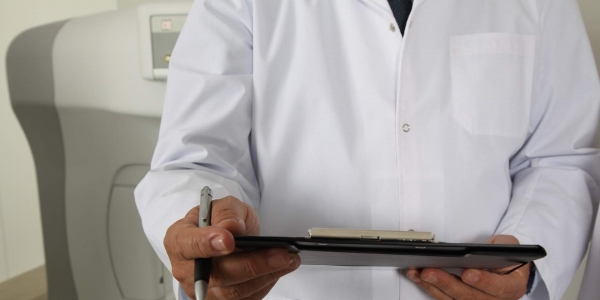
Indian Doctor-Inventors who have Patients and Patents
 Doctors are often considered as lifesavers! While their long run to save lives keep them locked in the OP’s and OPD’s, several young physicians are going beyond their duty. They also find time to spend in labs to create gadgets that could make the patients’ lives easier.
Doctors are often considered as lifesavers! While their long run to save lives keep them locked in the OP’s and OPD’s, several young physicians are going beyond their duty. They also find time to spend in labs to create gadgets that could make the patients’ lives easier.
Ranging from a stethoscope to the pacemaker, some of the world’s greatest medical inventions were done by doctors who used design thinking to solve pressing medical problems. Not only at a global level, but also in India too, doctors are innovating to make health-tech more suited to local conditions, as well as more affordable.
Bengaluru based Oncologist Dr Vishal Rao had appeared in the headlines for developing a voice prosthesis that cost just Rs.50. One of his cancer patient from Bangladesh had lost his voice after his larynx was removed. He was fitted with an artificial voice box after the surgery. But later it broke. Since the cost for another replacement was high, he couldn’t seek it either. That is when Dr Rao gave him the Aum Voice Prosthesis, an artificial voice box he designed and developed that cost just Rs 50. To test the silicone contraption powered by the patient’s lungs, Rao asked the patient to speak a few words. The patient responded so well that he uttered full sentence! While the cost of the existing devices ranges from Rs 15000 to Rs 30000, Dr Rao’s voice box only cost Rs 50, which makes it available to all.
Another Doctor who finds his passion for innovation is Dr Jagdish Chaturvedi. Dr Chaturvedi was a student of St. John’s College, Bangalore when he got frustrated with the fact that there is a lack of large monitors to see the results of endoscopy in the rural areas. “We used long mirrors and headlamps to detect cancer lesions. I used to struggle a lot as I couldn’t always spot lesions on time, it was guess-work treatment,” he said. He addressed this problem to his senior doctor Dr Ravi Nayar. “Dr Nayar told me to do something about it rather than just talk,” said Dr Chaturvedi.
He bought a digital camera of Rs 10000 and got an engineer to attach an endoscope to it. With his self-made, portable device, he was able to see the insides of the throat clearly on the camera screen. When he tried it on patients, it worked. Over 2 lakh patients have been screened so far using it.
Apart from this device, Dr Chaturvedi had invented 18 other devices. One among the devices was an extractor of foreign bodies from the nose. “Around 38 million children need nasal foreign body removal in India every year. Parents usually take them to paediatricians but they are not trained in using a removal device. It can be used only by ENT specialists. And in rural areas, it’s hard to find an ENT doctor. So, we developed a low-skill extractor that can easily be used by general practitioners and paediatricians. It’s in pre-commercialisation stage at present,” says Chaturvedi. Dr Chaturvedi, who specialises in sinusitis practises thrice a week at his clinic in Bengaluru and spends the rest of his time for innovations.
So there arises a question on when do these doctors get time for all these innovations? The answer is that many doctors leave full-time practice and set up medical tech labs and hire designers, engineers and marketing professionals while others cut down their OPD hours.
Dr Sreenivas Dorasala left full-time practice to work on an affordable and ergonomic body balance testing device. Dr Doresala developed Balance Eye and launched it in 2017. Priced at Rs 4.5 lakh, it is lighter, more compact and easy to handle. The existing alternatives were costly, at Rs 20 lakh, and hence not available with many doctors. “There was a pressing need for an alternative. Somebody had to do it, so why not me,” asks Dorasala. Nationally, over 120 body balance testing devices are in use now.
For Dr Rao, consulting patients are also equally important. “If someone gives me a big chamber to sit in and innovate, I won’t be able to do. I need to see patients,” says Rao who has patents for a drone-bot and for the theory of onco-theology. He has filed for patents for another 14 devices.
“A lot of doctors invent devices and publish results in medical journals. But people outside the community rarely get to know,” says Dr Nayar who is also the dean of academics at HCG Hospital.
Source: Times of India